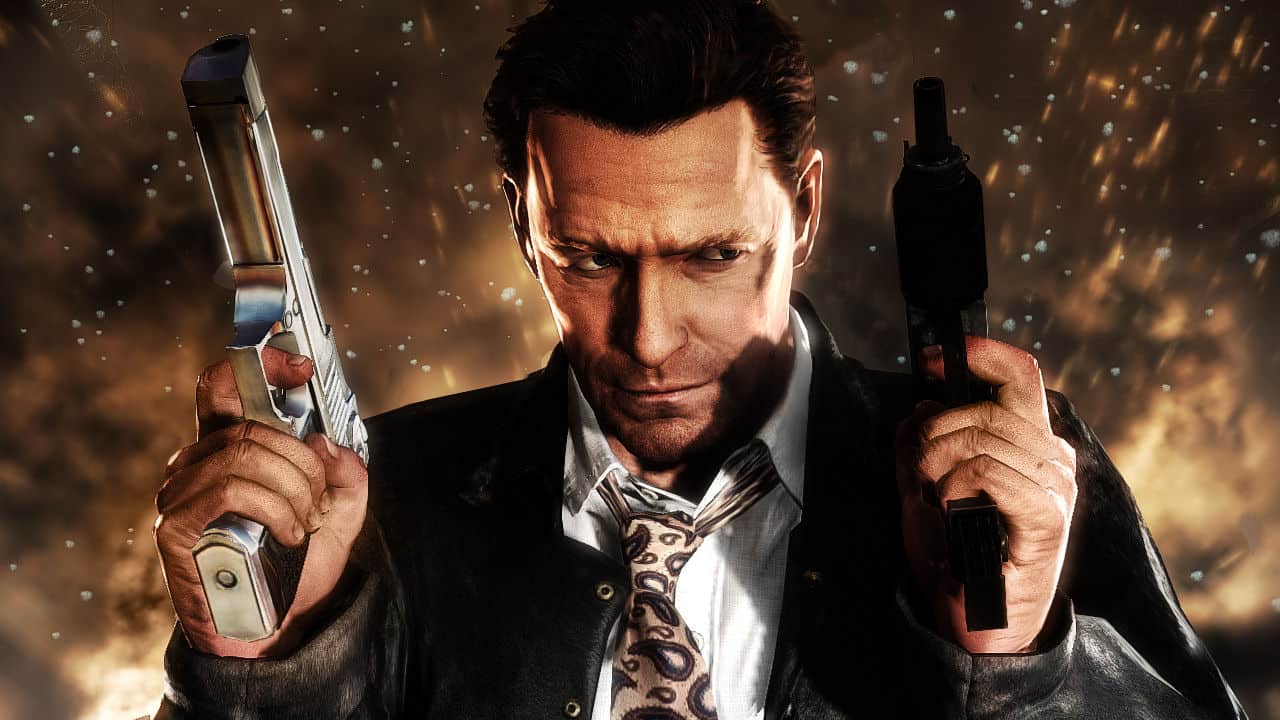Video Gamer is reader-supported. When you buy through links on our site, we may earn an affiliate commission. Prices subject to change. Learn more
The last we saw of Max Payne, he was on a beach in Bahia, allowing himself a cigarette and a beer after a job well done. The job in question entailed the thwarting of a black market organ-smuggling ring, in São Paulo, which took guts, considering he was working mostly alone, and that at the heart of the operation was a politician of bottomless wealth and lofty connections. Max was dressed in flip flops, cargo shorts, and a shirt of blue check. Over one shoulder he slung a duffel bag and, though he walked into the light of a sunset, accompanied, on the soundtrack, by the thump and fuzz of a band named Health, he wasn’t fooling anyone. Aside from his liver and his lungs, there was a deeper malady in Max. His work was far from finished. As he left, a weather forecast crackled from a nearby television: “Boy it’s dark in some places, but it’s sunny everywhere else.” Max, we knew, would always be drawn to the dark.
Sure enough, that is where he is heading. Remedy announced, this week, that the first two games in the trilogy, Max Payne and Max Payne 2: The Fall of Max Payne, will be remade. These are night games, New York games. Long before our hero found himself on that beach, in Max Payne 3, he was a nocturnal creature, labouring to unclog New York’s veins of a designer drug, named Valkyr; and, in the sequel, battling a cream-suited Russian mobster who ran a crew of killers posing as janitors. Development of these remakes will be financed by Rockstar Games, and Remedy will use its proprietary Northlight engine, which powered Quantum Break and, more recently, Control.

That game spun around Jesse Faden, a young woman who shot her way through a shadow-caked government bureau. But there was something centripetal in its spin. The plot hinged on Altered World Events, or AWEs: instances of the paranormal, sparked by the jostling of neighbouring dimensions. These days, of course, in the age of the shared universe, dimensional rifts are humdrum; quantum or otherwise, the breaks are gone. And Remedy—awed, as it were, by its own fictions—began to fold them in. The events of Alan Wake, for example, were retro-diagnosed as symptoms of such alteration, and, in a D.L.C. expansion, he and Jesse even crossed paths. Could something similar be in store for Max?
I certainly hope not. For a start, Max has no need of Jesse Faden; one of his defining features—beside a weakness for unwise shirts —has long been his inability to keep both feet in one world. In the first game, he was hounded by demonic visions; his body silted with Valkyr, he ran along ropes of blood, hanging in a black void, backed by the sound of a baby’s screams. In the sequel, he tramped through a fun house themed after a cancelled television show, set in the off air of Noir York City—the joke being that Remedy’s version of the real thing, slush-laden and bathed in the blue-and-red spray of police cars, was no less noirish a reflection.

Remedy has what few developers possess: a style, stitched together by repeated motifs, the most prevalent of which is the cracking and crazing of its realities. Indeed, its manner hasn’t always stopped shy of congealing into mannerism. This we may attribute to Sam Lake, who, with a mind unschooled in subtlety, has written all of the studio’s games. Lake’s characters are always tuned into radio stations and TV networks, and they all prickle with the paranoid notion that they are being imprisoned within works of fiction. Max once dreamt that he was in a game, and that he saw “Weapon statistics hanging in the air, glimpsed out of the corner of my eye”—as if the HUD were a halo. Alan Wake, meanwhile, not only chased down the pages of a manuscript that he hadn’t actually written yet (still one of the best metaphors for the fluttering torment of procrastination), but he wound up trapped in the waters of—wait for it—a lake.
This is why the third game, made not by Remedy but by Rockstar, felt like such a departure. It didn’t breathe closed-circuit air; its landscape and its light, though fouled by savage deeds, felt fresh. Here was Max, not so much hard-boiled as sunburnt, fighting his way through oversaturated filters and editing that seized every scene like a fever, cutting the camera’s focus into fitful glances. It seemed as though this version of Max, pill-fogged and soused in booze, had arrived from a different dimension. The truth is, Max Payne has already experienced his Altered World Event; it took him to São Paulo and left him in Bahia. And, as much as I thrill to the prospect of returning afresh to his earlier chapters, more exciting still is the notion that these remakes may spur our chances for a true sequel—whether by Remedy or Rockstar. Wherever Max is now, wherever he went after that beach and whatever world he is in, we need him. It may be sunny in some places, but it’s dark everywhere else.

